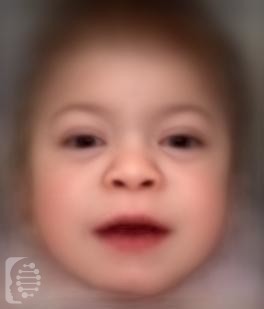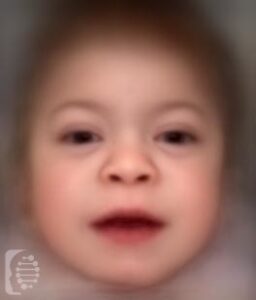What is Mucolipidosis II Alpha/Beta?
Mucolipidosis II syndrome is a rare genetic condition that affects multiple parts and systems of the body.
It is also known as I-cell disease, and as a lysosomal storage disorder.
It is a progressive disorder meaning symptoms worsen with time.
Syndrome Synonyms:
I-Cell Disease; ICD; ML II Alpha/Beta; ML2; MLII; Mucolipidosis II; Ml II; Mucolipidosis type-II; Mucolipidosis type II
What gene change causes Mucolipidosis II Alpha/Beta?
Mutations to the GNPTAB gene are responsible for the syndrome. It is inherited in an autosomal recessive pattern.
Autosomal recessive inheritance means an affected individual receives one copy of a mutated gene from each of their parents, giving them two copies of a mutated gene. Parents, who carry only one copy of the gene mutation will not generally show any symptoms but have a 25% chance of passing the copies of the gene mutations onto each of their children.
The syndrome is a lysosomal storage disease caused by a deficiency of arylsulfatase B (ASB.
What are the main symptoms of Mucolipidosis II Alpha/Beta?
Babies with Mucolipidosis II are usually born small, with a weak cry and noticeably weak muscle tone.
Throughout infancy and childhood, they will present with delayed development– physical and motor.
Individuals with Mucolipidosis II often have what is referred to as distinct or coarse facial features.
Skeletal and joint abnormalities are common in individuals with the syndrome. As are hernias, born umbilical and abdominal.
Other health conditions associated with the syndrome include frequent respiratory infections, frequent rear infections often resulting in hearing loss, a hoarse voice due to a stiffening of the vocal cords, and excessive growth of the gums.
Possible clinical traits/features:
Autosomal recessive inheritance, Thin skin, Pathologic fracture, Palpebral edema, Ovoid vertebral bodies, Recurrent otitis media, Umbilical hernia, Protuberant abdomen, Severe global developmental delay, Talipes equinovarus, Weight loss, Recurrent respiratory infections, Splenomegaly, Recurrent bronchitis, Thickened calvaria, Short long bone, Death in childhood, Thoracolumbar kyphoscoliosis, Sparse and thin eyebrow, Heart murmur, Varus deformity of humeral neck, Recurrent pneumonia, Wide intermamillary distance, Severe postnatal growth retardation, Progressive alveolar ridge hypertropy, Myelopathy, Long philtrum, Macroglossia, Inguinal hernia, Increased serum beta-hexosaminidase, Increased serum iduronate sulfatase level, Megalocornea, Lack of skin elasticity, Osteopenia, Metaphyseal widening, Neonatal hypotonia, Lower thoracic interpediculate narrowness, Anteverted nares, Narrow forehead, Mucopolysacchariduria, Cardiomegaly, Broad alveolar ridges, Carpal bone hypoplasia, Bullet-shaped phalanges of the hand.
How is it diagnosed?
To find out if someone has a diagnosis of Mucolipidosis II Alpha/Beta, it is important to have a consultation and evaluation with a clinical genetic specialist. Specialists may also suggest specific genetic testing or other types of tests to help reach a diagnosis. FDNA’s AI technology can help speed up the diagnostic process by analyzing facial features and other health information.


